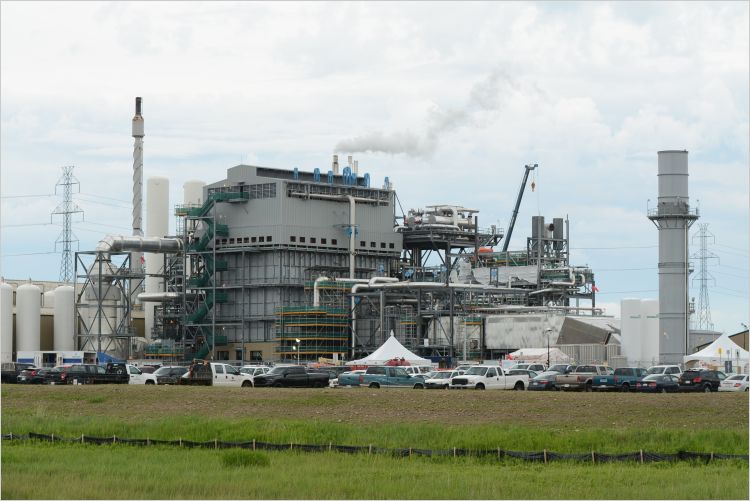
Existing Air Products hydrogen plant in Fort Saskatchewan. The company's new proposed plant will use best-in-class technology to reduce greenhouse gas emissions. Photo: Roberta Franchuk, Pembina Institute.
EDMONTON — SIMON DYER, deputy executive director at the Pembina Institute, made the following statement in response to Air Products announcement of a plan to build a blue hydrogen energy complex in Alberta:
“The Pembina Institute was contracted by Air Products to conduct an independent assessment of the greenhouse gas emissions of the proposed Air Products Alberta Blue Hydrogen Hub project.
“The project will produce hydrogen using next generation auto-thermal reforming technology and best-in-class technology to minimize emissions from plant operations, including carbon capture with a 95% capture rate and on-site generation of electricity using a hydrogen-fueled power plant. This is a major improvement over traditional hydrogen production facilities in Canada today and sets a high standard for new hydrogen production from natural gas.
“While upstream emissions associated with producing the natural gas used in the plant remain a significant source of greenhouse gases, on a full life cycle basis (Scopes 1, 2 and 3) the GHG intensity of the proposed project is substantially lower than average hydrogen production from natural gas with carbon capture. We are impressed by the innovative approach taken by Air Products and encourage them to consider ways to reduce the upstream emissions from their natural gas supply.
“The Pembina Institute sees low- and zero-carbon hydrogen as being able to play an important role in decarbonizing Canada’s energy systems. While hydrogen has many potential applications, its greatest benefit is the reduction of carbon pollution from hard-to-decarbonize sectors and end uses, such as long-haul heavy-duty freight transportation and high-heat industrial processes. For Alberta’s hydrogen to be competitive on a global scale, it will have to close the gap between the life cycle emissions of hydrogen produced with natural gas and hydrogen produced with renewable electricity. Air Products has developed an innovative project design that is a major improvement relative to existing hydrogen production using natural gas. ”
-30-
Contact
Jill Sawyer
Senior Communications Lead, Pembina Institute
587-585-4522
Background
Scope 1, 2 and 3: Pembina Institute’s assessment examined the full life cycle emissions of the project, including Scope 1, 2 and 3 emission sources. Scope 1 emissions are from plant operations, Scope 2 is not applicable because the project will not import energy and Scope 3 includes emissions associated with natural gas production, processing and transport. Construction and decommissioning Scope 3 emissions were considered negligible and not included in this assessment.
Submission to the Government of Alberta: Recommendations for advancing Alberta's hydrogen strategy
Primer: Hydrogen on the path to net-zero emissions - Costs and climate benefits
Paper: Canadian Methane Regulations